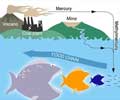Variations in the gene TMEM106B contribute to the differences in aging of the normal brain and the risk of neurological disease.
- Scientists from Columbia University Medical Centre have identified that TMEM106B gene polymorphism is associated with aging.
- Good copies of the gene aid in responding well to age related stress while bad copies of the gene are associated with increased aging.
- The scientists also state that the gene polymorphism could be associated with neurodegenerative diseases like Alzheimer’s.
Gene Variants Associated with Disease Risk
Previous studies have been used to identify gene variations that are known to increase the risk for neurodegenerative diseases like the Apolipoprotein gene (APOE) for Alzheimer’s disease risk. An assistant professor of pathology and cell biology in the Taub Institute, Dr. Herve Rhinn, who is also the co-author of the study, said that only a small aspect of the disease progress can be explained by genes while the major influencing factor or contributor, is age. There are changes that occur in the brain that lead to the development of the disease. These are the factors that triggered the current research, encouraging the scientists to look beyond the gene that could be associated with the disease, and identify the gene associated with aging.
Analyzing Gene Data
Dr. Rhinn and Dr. Abeliovich isolated and analyzed genes from 1904 autopsied human brain samples that did not have any neurodegenerative disease. The scientists initially gathered the initial gene products, called transcriptomes, that when put together gave the picture of the brain at a particular age (an average transcriptome).
The transcriptome of each sample patient was then compared with the average transcriptome of people at the same age, with focus on 100 genes whose expression is associated with an increase or decrease in age.
Differential Aging
The comparison between the two transcriptomes provided a differential aging, that was a measure of the difference between the biological (apparent) age and the real (chronological) age of the individual. The differential age aided in identifying whether an individual’s frontal cortex was younger or older than the chronological age.
The next important step in this study was to identify the gene that resulted in an increase in the differential age. TMEM106B was the gene that the scientists said ‘stood out’ or was very common
- About one-third of people usually have two copies of this gene
- Another third have one copy
TMEM106B
The TMEM106B starts to influence how an individual ages once the person reaches 65 years of age. Since the influence of the gene does not begin before that, everyone is at the same level up until then. The current study found that
- When there were two copies of the ‘good’ variants of the gene, the individual responded well to stress
- When there were two copies of the ‘bad’ variants of the gene, the brain starts to age faster
Progranulin Gene
Another gene that is associated with brain aging is the progranulin gene, although it’s influence on aging is less than that of TMEM106B. Though both these genes are present in different chromosomes, they are part of the same signaling pathway. Frontotemporal dementia which is a rare neurodegenerative disease is believed to be associated with these genes.
Frontotemporal dementia
Frontotemporal lobar degeneration (FTLD) is a condition characterized by dementia among people younger than 65 years of age. This condition is associated with changes in
- behavior
- personality
- language
Reference:
- Johanna I Busch, Maria Martinez-Lage, Emily Ashbridge, Murray Grossman, Vivianna M Van Deerlin, Fenghua Hu, Virginia MY Lee, John Q Trojanowski and Alice S Chen-Plotkin “Expression of TMEM106B, the frontotemporal lobar degeneration-associated protein, in normal and diseased human brain” Acta Neuropathologica Communications
- "Asa Abeliovich, Herve Rhinn et al. Genetic determinants of aging in human brain." Cell Systems, (2017) DOI: 10.1016/j.cels.2017.02.009
Source-Medindia













